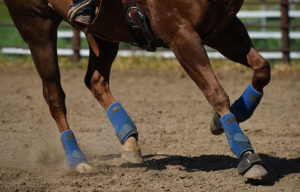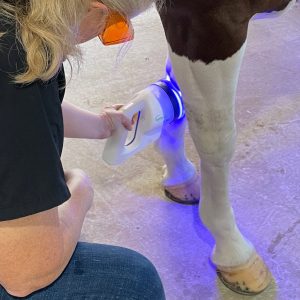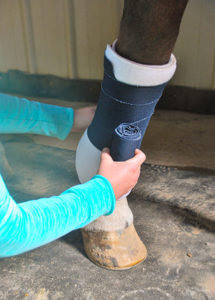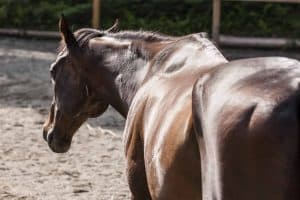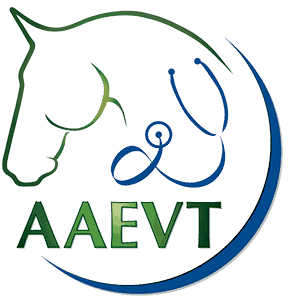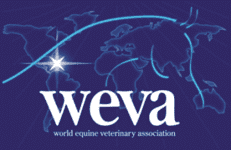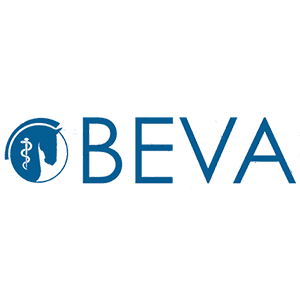Veterinary Ophthalmologists Using New Equipment to Correct Glaucoma
Next week, veterinary ophthalmologists at The New Jersey Equine Clinic in Clarksburg, N.J., will perform an endoscopic laser procedure on a horse with glaucoma–one of the first equine uses for a new piece of equipment in the ophthalmologists’
Next week, veterinary ophthalmologists at The New Jersey Equine Clinic in Clarksburg, N.J., will perform an endoscopic laser procedure on a horse with glaucoma–one of the first equine uses for a new piece of equipment in the ophthalmologists’ toolbox.
James M Clinton, VMD Dipl. ACVO of Medford, N.J., hopes to restore vision in the horse’s eye using an instrument that combines imaging and laser capabilities. Scott E. Palmer, VMD, Dipl. ABVP, will assist with the surgery.
During the planned procedure–called endoscopic cyclophotocoagulation–the surgeon works through a tiny incision to visualize the ciliary body and apply laser beams to inhibit the production of excess fluid within the eye. In glaucoma, an overabundance of fluid elevates intraocular pressure, and, if left uncontrolled, eventually damages the optic nerve.
The procedure has been performed in humans with a 90-95% success rate, but it is rarely performed in animals due to the cost ($40,000 to $45,000) of the specialized equipment.
In horses glaucoma is most often a condition secondary to uveitis, which is inflammation of the uvea (the middle layer of the eye). The condition is relatively rare, but according to Thomas F. Evans, DVM, a resident in veterinary ophthalmology who will assist Clinton with the procedure, the occurrence of primary glaucoma in horses could be higher than is recognized.
|
“Glaucoma is difficult to diagnose in horses,” noted Evans. “In dogs it is easily diagnosed by pain, an opaque cornea, and poor vision or loss of vision. Horses (and cats) seem to be able to maintain a clear cornea, even with high intraocular pressure.”
Elevated intraocular pressure is the most frequent sign of glaucoma in humans, and it is routinely measured during an eye exam. Although the cause of elevated intraocular pressure is not always identified, pharmacological and surgical treatments are aimed at lowering pressure to normal levels and preventing or minimizing damage to the ocular nerve.
Glaucoma is often characterized as a “silent thief” of human vision because it is painless. It seems to take a similar course with horses.
“In horses, the main symptom is reduced vision,” noted Evans. “If the horse does not have concurrent uveitis there may be no signs of pain, such as discharge or squinting.” He added that enlargement of the equine eye and “lines in the cornea” (small factures of Descemet’s membrane, which is the fourth layer of the cornea, located between the endothelium–from which it is secreted–and the stroma, the thickest layer of the cornea) are sometimes observed.
Alomar, the 13-year-old Anglo-Trakhener gelding who will undergo the procedure, exhibited this sign in his right eye (see photo). An observant farm manager at Mayfaire, the Vincentown, N.J., barn where owner Marilyn Petersen boards him, brought it to her attention. Ironically, Alomar had already undergone surgery in his left eye for a partial corneal transplant due to removal of an ocular tumor, but the glaucoma in the right eye seems to be unrelated.
“Dr. Evans thinks Alomar is just an unlucky guy,” Petersen said.
Petersen said she is hoping that Alomar’s vision will return in his right eye once the glaucoma is controlled. Her goal is to restore quality of life for the 17-hand chestnut gelding, who she says has become a barn favorite: “We all really love this horse.”
Watch TheHorse.com for an update on this case.
An observant manager at Alomar’s stable noticed “lines” on the horse’s cornea. Veterinarians will perform a new surgery to attempt to correct his glaucoma next week TheHorse.com is home to thousands of free articles about horse health care. In order to access some of our exclusive free content, you must be signed into TheHorse.com. Already have an account? Written by: Stay on top of the most recent Horse Health news with © 2022 Copyright Statement dolor sit amet, consetetur sadipscing User Terms, sed diam nonumy eirmod tempor invidunt ut labore et dolore magna aliquyam erat, sed diam voluptua. At vero eos et accusam et justo duo dolores et ea rebum. Stet clita kasd gubergren, no sea takimata sanctus est Lorem ipsum dolor sit amet. You need to be logged in to fill out this form "*" indicates required fields |







